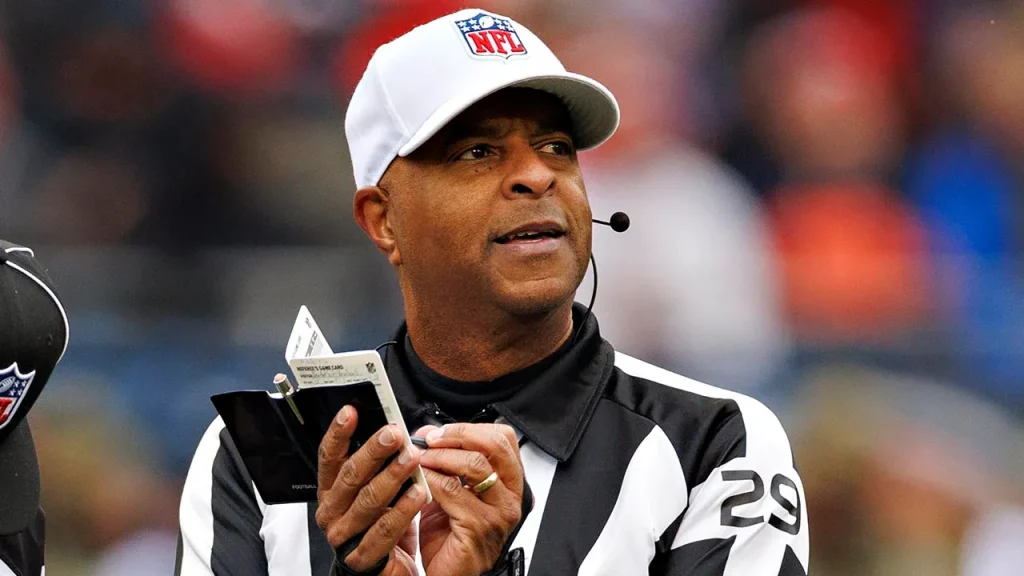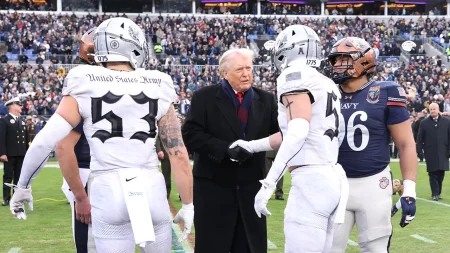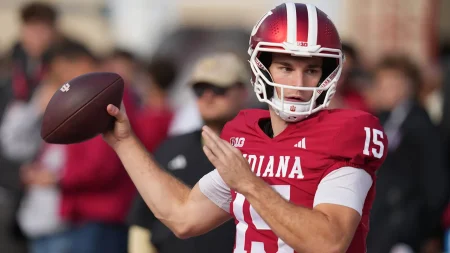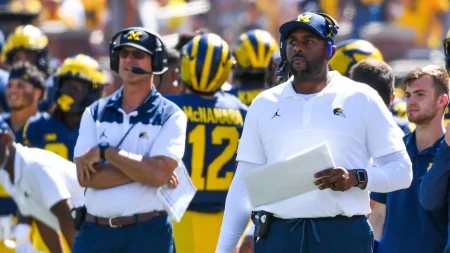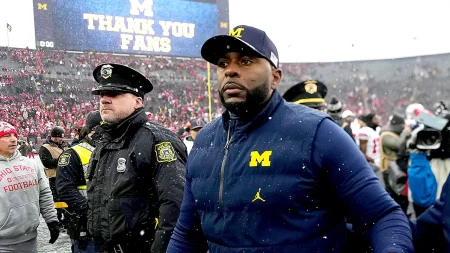NFL Official Adrian Hill Injured During Bills vs. Texans Game: A Glimpse into Football’s Physical Toll
In a season already marked by an unprecedented wave of injuries across the National Football League, Thursday night’s matchup between the Buffalo Bills and Houston Texans provided a stark reminder that no one on the field is immune to the physical risks of the game—not even the officials. Head referee Adrian Hill became an unexpected addition to the injury report during the third quarter when he pulled up lame while monitoring a Texans offensive drive. The veteran official was positioned in the end zone when the incident occurred, and as he attempted to move with the play, he suddenly grabbed his left leg in obvious pain. The sobering scene continued as Hill required assistance to leave the field and ultimately needed to be carted to the locker room, unable to finish officiating the game he started. This unexpected development forced umpire Roy Ellison to step up and assume the head referee responsibilities for the remainder of the contest, highlighting the need for contingency plans at every level of the game.
Hill’s injury serves as a reminder of the physical demands placed on NFL officials, who must maintain position and mobility throughout games that feature some of the world’s most elite athletes moving at extraordinary speeds. Having served as an NFL official since 2010, Hill began his career as a line judge before earning a promotion to referee in 2019 following the retirement of veterans Pete Morelli and Walt Coleman. The transition from Hill to Ellison mid-game was particularly notable given Ellison’s own complicated history within the league. In 2018, Ellison found himself at the center of controversy following a heated post-game confrontation with Bills defensive lineman Jerry Hughes. After a game between Buffalo and Miami, Hughes accused Ellison of directing an expletive toward him during play—an incident that reportedly cost Ellison a one-game suspension and the equivalent fine. This history added an interesting dimension to Ellison’s emergency promotion during Thursday’s game, which ironically featured one of the teams involved in that past controversy.
The official’s injury was just one component of a broader injury narrative that has defined the 2025 NFL season thus far. Both the Bills and Texans entered Thursday’s contest already dealing with significant personnel losses, and the situation only worsened as the game progressed. The Bills faced a particularly concerning sequence when their franchise quarterback Josh Allen needed to exit the field after absorbing a punishing hit. The potential loss of Allen, even temporarily, represented a nightmare scenario for Buffalo, whose offensive identity revolves entirely around their dynamic signal-caller’s unique combination of passing prowess and physical running ability. The hits kept coming for the Bills as three additional players—wide receiver Khalil Shakir, defensive back Maxwell Hairston, and offensive lineman Dion Dawkins—each required concussion evaluations during the game. Meanwhile, linebacker Terrel Bernard suffered an elbow injury serious enough to end his night prematurely, further depleting a Buffalo defense already facing significant challenges.
The Texans weren’t faring much better on the injury front as they took the field Thursday without two key starters. The most notable absence was quarterback C.J. Stroud, whose emergence as one of the league’s most promising young talents has rejuvenated Houston’s franchise. Without their offensive centerpiece, the Texans faced the unenviable task of trying to generate consistent offense against a typically stout Buffalo defense. Adding to Houston’s challenges was the absence of safety Jalen Pitre, further weakening a secondary tasked with containing Buffalo’s explosive receiving corps. These absences highlighted how injuries have become perhaps the most significant factor in determining team success across the NFL this season, with depth and adaptability proving just as crucial as top-end talent in the war of attrition that professional football has become.
The injury to referee Hill represents a less commonly discussed aspect of the physical nature of football—the toll it takes on those adjacent to the actual competition. While officials don’t endure the violent collisions that players do, they must maintain constant vigilance and mobility throughout games that can last well over three hours. The average NFL referee runs between 5-7 miles during a typical game while maintaining perfect positioning to make split-second judgments that can decide outcomes worth millions of dollars. Officials must be in exceptional physical condition despite being, on average, significantly older than the players they oversee. Hill’s injury serves as a reminder that the physical demands of football extend beyond those in helmets and pads, affecting everyone who steps between the lines during these intensely physical contests that captivate millions of viewers every week.
As the 2025 NFL season progresses, the conversation around player safety and injury prevention continues to intensify. Teams have invested unprecedented resources into medical staffs, recovery technologies, and preventative protocols—yet injuries continue to mount at an alarming rate. The sight of a referee being carted off the field provides a powerful visual that reinforces how fundamentally physical football remains despite ongoing efforts to make the game safer. For players, coaches, officials and fans alike, the harsh reality is that injuries represent an inevitable aspect of a sport defined by its physicality and speed. As teams like the Bills and Texans continue navigating the challenges of keeping enough healthy bodies on the field to remain competitive, Thursday night’s unusual referee injury serves as yet another reminder of football’s unforgiving physical nature—and how quickly circumstances can change for anyone connected to the game, regardless of their role or preparation. The NFL’s injury epidemic shows no signs of abating, leaving teams, officials and fans to adapt to an increasingly unpredictable landscape where availability often trumps ability in determining who succeeds when the final whistle blows.





